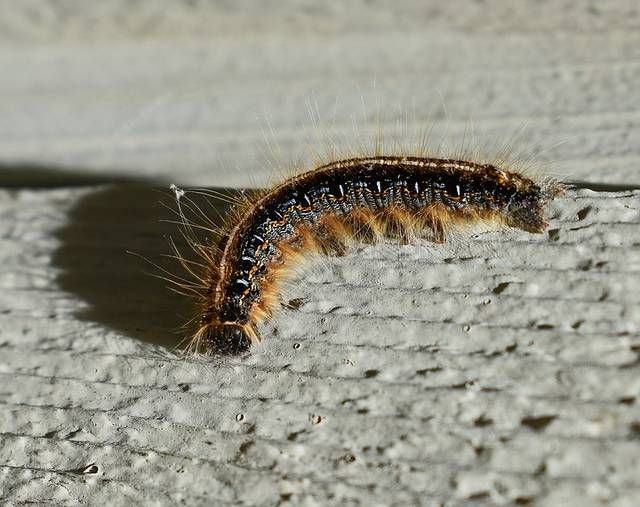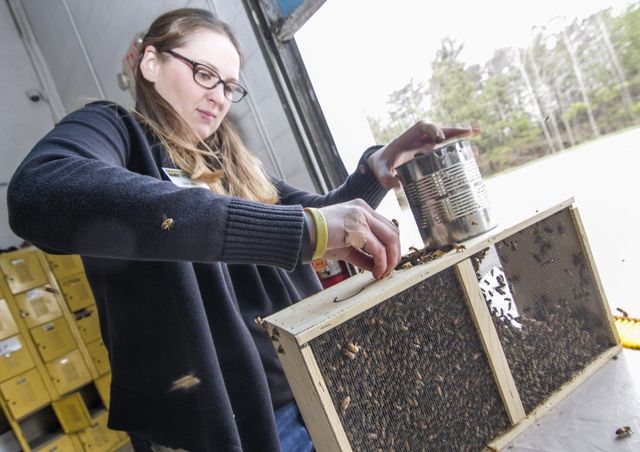Click here to subscribe today or Login.
WRIGHT TWP. — Officials are hoping to make the most of a limited window of opportunity to control gypsy moths.
The population is expected to fall for the next three to five years, with another outbreak occurring around 2022. In the interim, officials want to be ready to deal with the next round of the destructive caterpillars, and funding appears to be a key cog in the process.
Representatives of Luzerne County, Wright Township and the state Department of Conservation and Natural Resources met Thursday to discuss funding options for gypsy moth spray programs. There are essentially two options: Partner with the state to utilize limited federal funding; or a partnership between the county and municipalities to pay for the work.
“The idea of a county-municipality partnership to pay for spraying really appeals to me,” said Luzerne County council member Jane Walsh Waitkus. “This is a wonderful opportunity to form partnerships with municipalities to help solve problems.”
The sticking point with having DCNR handle the spraying was the assessment process where a number of qualifications need to be met, including number of egg masses present and amount of forested cover. It’s a process that could be timely and costly, which is why several officials at the meeting liked the idea of a county-municipality partnership.
Wright Township resident John Hargreaves raised the idea of generating revenue or establishing a fund to pay for spraying. He said there are areas along Routes 309 and 437 in the township where roadside trees have been killed by previous gypsy moth infestations. Those trees need to come down, Hargreaves said, so perhaps it’s possible to contract with a timbering firm to buy them for lumber.
“Maybe we can make money to help pay for spraying,” Hargreaves said.
He also outlined other revenue options, including using donated funds and lobbying legislators to contribute state funding for spraying.
Thursday’s meeting was the result of a committee created by county council to discuss the gypsy moth problem. The group meets once a month and Walsh Waitkus feels progress is being made. While the focus so far has been on Wright Township, Walsh Waitkus said gypsy moths are a county-wide issue and she hopes other municipalities get involved.
“Gypsy moths are expected to be on the upswing again in 2022. We need to use this time to come up with a plan,” she said.
That’s exactly what Donald Eggen, forest health manager with DCNR, encouraged officials to do. Gypsy moths have been in Luzerne County since 1932 and they aren’t going away, he said.
Still, the pests can be suppressed and damage limited if a plan is in place.
“An outbreak lasts five years and right now we’re on the downside of that,” Eggen said. “You need to get ready for the next outbreak because it’s going to come.”






